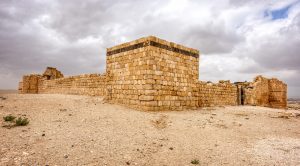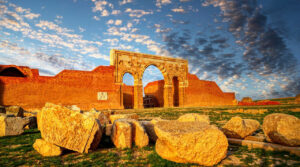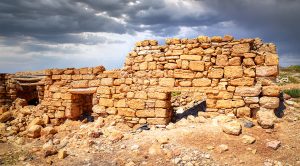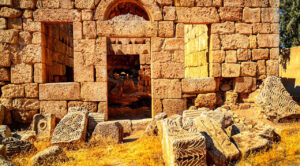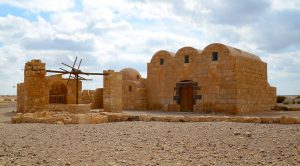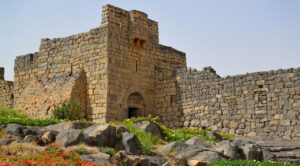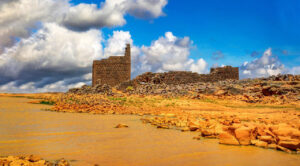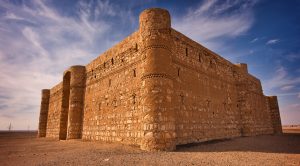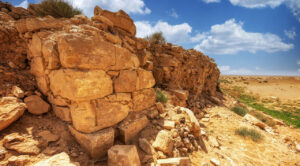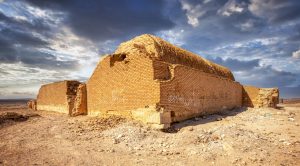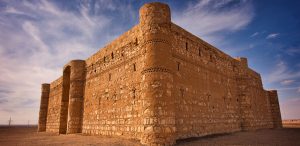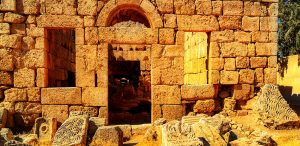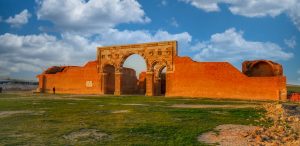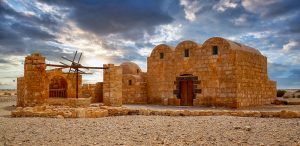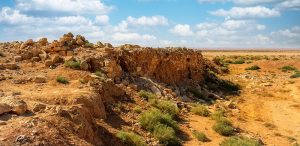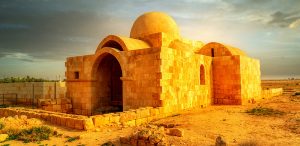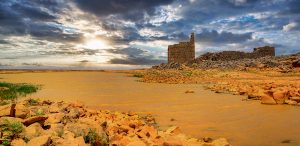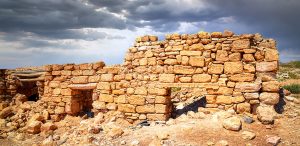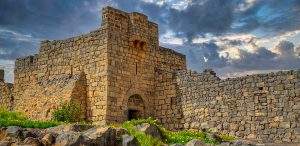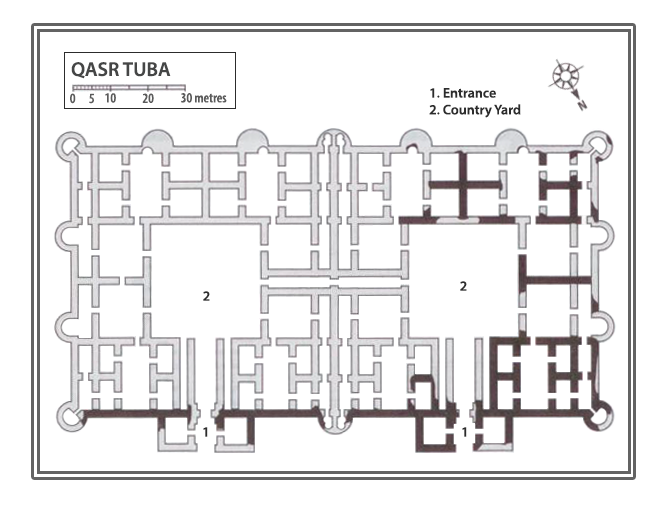Qasr Tuba is one of the most captivating desert castles you can visit and offers a rare glimpse into princely life during the 8th century. To reach this hidden gem, you’ll need a four-wheel drive and an experienced guide, but the adventure through the desert tracks from Azraq, Qasr Kharana, or Qatrana is well worth the effort for those seeking the romance of history in the vast expanse of the Jordanian desert.
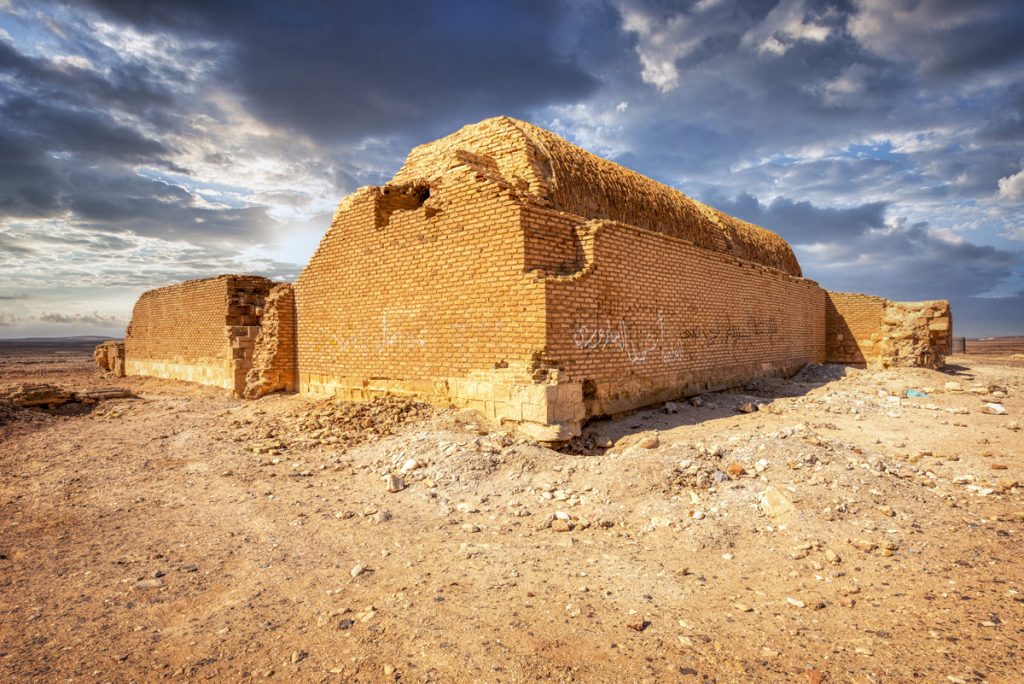
Architectural Marvel
Built during the reign of Caliph al-Walid II (743–744), Qasr Tuba is a rectangular fortress spread across an impressive 140 by 73 metres, with 14 semi-circular towers strategically placed around its exterior—four guarding the corners and additional towers flanking the connecting points of its unique dual structure.
The design of Qasr Tuba is fascinating. It consists of two identical 70-metre square complexes joined by a corridor, although only one section of the design was fully completed. A central gate links these twin structures through a passageway nestled along their shared wall.
Upon entering, you’re welcomed by an elongated hallway that opens into a courtyard, surrounded by suites of rooms known as “bayts.” These courtyards and bayts were likely integral to the daily life within the castle. Notably, the architectural style of Qasr Tuba shares striking similarities with that of Qasr Al-Mushatta—another famous Umayyad palace—featuring the same intricate masonry exteriors and brick interiors. Even the doorways and brick vaulting mirror each other perfectly, suggesting they were constructed around the same time.
Design and Decoration
Though unfinished, the remnants of Qasr Tuba hint at its former grandeur. The doorposts and lintels are adorned with decorative motifs that echo the artistry of Qasr Al-Mushatta. The towers even feature latrines, a necessity for a palace of its scale and purpose. These small details offer a window into the ingenuity and elegance of the Umayyad period’s architecture.
Ingenious Water Management
Just north of the castle lies evidence of the advanced planning that went into sustaining life in the desert. Alongside a dry riverbed, you’ll find the site of Qasr Tuba’s ancient water supply. Three massive stone wells and plastered pools were designed to collect and store water, and nearby circular structures were likely used to draw water using animal power. This ingenious system highlights the resourcefulness of those who built and inhabited the palace.
Purpose of Qasr Tuba
Though it may seem remote, the castle’s location was likely not coincidental. Historians believe Qasr Tuba was intended to serve as a caravanserai—a resting place for traders travelling along the Incense Route between Syria and Arabia. This castle would have provided vital support to caravans, offering shelter and supply replenishment in an otherwise challenging environment.
Why Visit Qasr Tuba?
Standing amidst the stillness of the desert, Qasr Tuba feels like a place out of time. Its unfinished walls and intricate designs bring history to life, and its connection to other Umayyad palaces offers a broader story of the region’s architectural evolution.
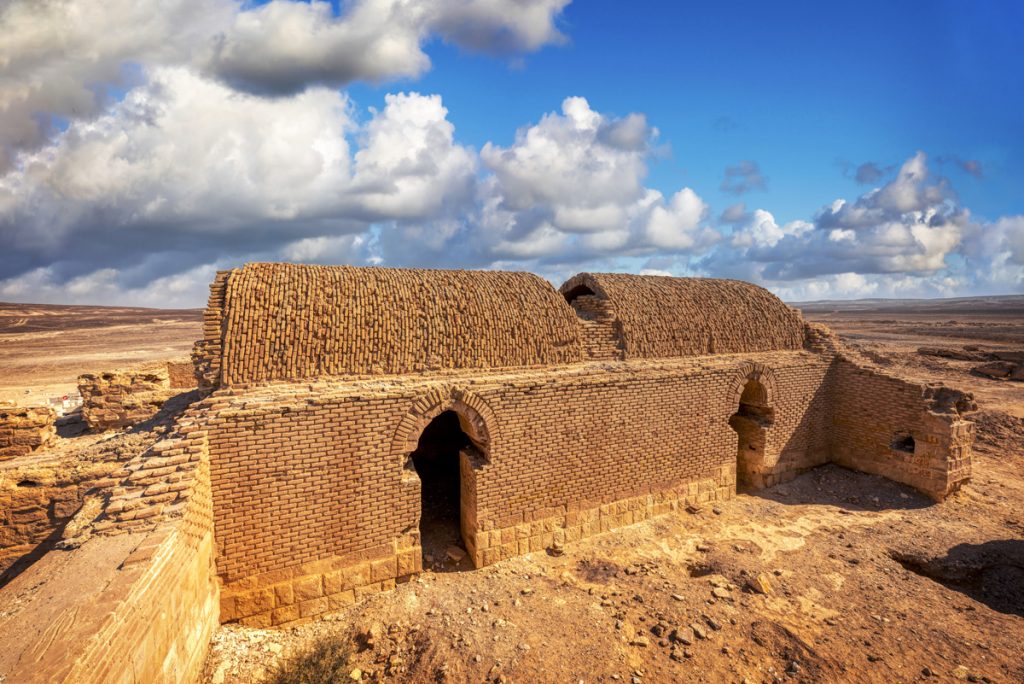
Qasr Tuba stands as one of the most historically significant landmarks from the Umayyad period, offering a vivid glimpse into the past. This remarkable structure, part of the famed “desert castles,” was built in the early 8th century during the reign of the Umayyad Caliphate. Unlike grand palaces or fortresses, Qasr Tuba and its counterparts were unique expressions of early Islamic architecture, blending practicality with artistic innovation, and were intricately tied to the agricultural practices of the era.
This site first drew the attention of the art historical world thanks to the Czech explorer Alois Musil, who visited the area in 1896. Hearing tales from the Bedouin of Madaba about ruins adorned with intricate columns, paintings, and inscriptions, Musil returned in 1898 to uncover Qasr Tuba—the largest and most remote of these desert residences. This discovery highlighted the ingenuity of the Umayyad caliphs, who constructed these structures not only as retreats from the bustling city of Damascus but also as meeting points for forging critical alliances with the Bedouin tribes of the desert, upon whose support their power often depended.
Qasr Tuba, like the other desert complexes, provided a space for both recreation and diplomacy. Here, the caliphs would engage in hawking, hunting, and racing Arabian horses, while simultaneously deepening ties with local tribes. Though much of its original splendour, including intricate stone carvings, has been lost to time, a striking lintel survives and is now preserved in the Amman Archaeological Museum.
This iconic site reflects the fusion of practicality, artistry, and cultural significance characteristic of the Umayyad legacy, reminding us that these remote, enchanting ruins were much more than mere architectural experiments. They were hubs of agricultural innovation, centres of political strategy, and places where the desert history of Islam was shaped and celebrated.


